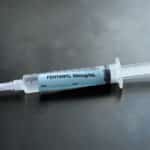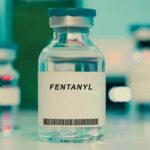A lethal dose of fentanyl can be different for each person because it depends on body mass, age, and past drug history. However, 2 milligrams of fentanyl is considered a lethal dose by the Drug Enforcement Administration (DEA).
Fentanyl is a synthetic opioid analgesic used to treat chronic pain or severe pain after surgery. It works by binding to opioid receptors in the brain and changing how the body responds to pain.
Similar to other opioids like oxycodone, fentanyl is classified as a Schedule II drug. This means that, while it has medical uses, it also has a high potential for abuse.
The drug is available in tablets, transdermal patches, lozenges, nasal sprays, and powder. It can be found under the brand names Abstral, Actiq, Duragesic, Fentora, and Sublimaze.
What Is A Lethal Dose Of Fentanyl?
The exact dose of fentanyl that is lethal depends on a number of factors including body size, tolerance for the drug, past usage, age, and gender. A fatal dose for one person may not be a fatal dose for someone else.
That being said, the Drug Enforcement Administration (DEA) suggests that just 2 milligrams of fentanyl can lead to an overdose.
A healthcare provider is unlikely to ever prescribe that much, but if you’re buying illicit fentanyl from the illegal drug market, counterfeit painkillers can contain anywhere from 0.2 to 5.1 milligrams of fentanyl in one tablet.
Counterfeit pills are often made by mixing fentanyl with other illicit drugs, increasing the risk of overdose even further.
According to the Centers For Disease Control and Prevention (CDC), synthetic opioids like fentanyl are the most common drug involved in drug overdose deaths in the United States.
Fentanyl Overdose
Overdosing on this prescription opioid can lead to observable signs and symptoms. If you notice any of the following signs in yourself or a loved one, it’s important to get help immediately. If nothing is done, it can quickly turn into a fatal overdose.
The most common signs of a fentanyl overdose include:
- extreme drowsiness
- dizziness
- decreased motor coordination
- nausea
- vomiting
- slurred speech
- confusion
- aggressiveness
- pinpoint pupils
- bluish lips, hands, feet, fingernails, or toenails
- slowed breathing
- low blood pressure
- unconsciousness
- cold, clammy skin
- seizures
If someone is experiencing any of the signs of an opioid overdose, Narcan (naloxone) can be administered to reverse any life-threatening effects.
Fentanyl Addiction Treatment
Treatment for fentanyl addiction often starts with medication-assisted treatment (MAT). A healthcare provider will prescribe a medication used to treat an opioid/opiate addiction. The most common of these medications are buprenorphine and methadone.
Once this treatment is started, therapy, support groups, and dual-diagnosis treatment for co-occurring mental health disorders like depression may be recommended as well.
If you or a loved one lives with fentanyl addiction or another type of substance use disorder, please contact us today to learn about our outpatient treatment options.
Sources
Written by
Northeast Addition Editorial Team
©2024 Northeast Addition Center | All Rights Reserved
This page does not provide medical advice.




